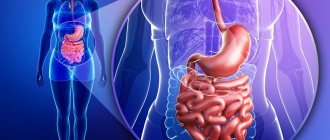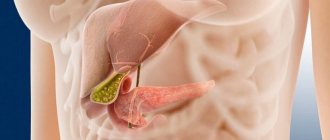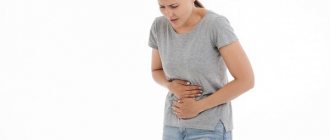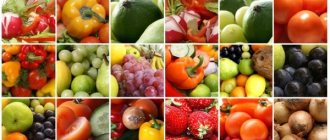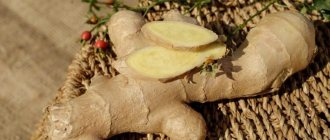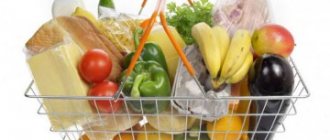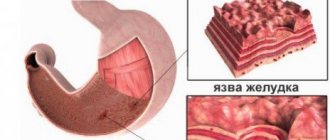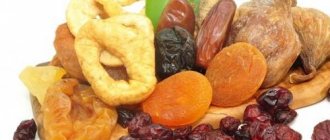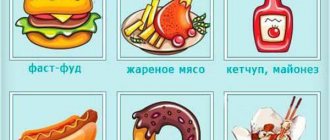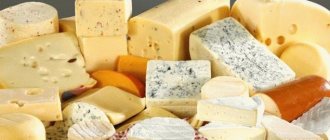Acute intense pain in the lumbar region often becomes a sign of kidney disease. The cause of renal colic lies in the displacement of stones in the urinary tract, in the bend and obstruction of the ureter, and in inflammatory processes. The passage of stones or sand in the urinary system causes a number of inconveniences, even causing shock syndrome in humans.
Doctors consider prescribing a special diet as a way to prevent such a common disease or alleviate symptoms. A special diet will not cure the disease, but it will help reduce pain, relieve symptoms and reduce the load on the organs of the genitourinary system.
General nutritional recommendations, table No. 10
For renal colic, if it occurs for the first time, doctors usually prescribe table No. 10. This is a specially developed set of products, the use of which normalizes metabolic processes in the body.
Table number 10 involves eating every 4 hours, in small portions. It is not recommended to overload the digestive system, so overeating is not allowed under any circumstances.
The consumption of carbohydrates and fatty foods, as well as foods that are difficult to digest, should be reduced to a minimum.
Fish and meat should be boiled, fried and smoked should be excluded. Dietary, non-fat meat is preferable. You need to remove rich, puff pastry and flour products from your diet. Liquid (water) consumption should be increased to 3 liters per day, giving preference to cereals and vegetable broths.
You should eat fermented milk products; it is better to add milk to tea. The consumption of vegetables and fruits is highly encouraged, which are best eaten not raw, but stewed or boiled. Vegetable juices (better diluted with water) and fruit salads rich in vitamins are also useful. It is important to consume seasonal vegetables and fruits when they contain the highest concentration of vitamins.
In essence, table No. 10 is general principles of nutrition that will be useful in any case.
Renal colic is often a symptom of the development of urolithiasis. There are many types of kidney stones, the most common being oxalate, urate and phosphate. After an examination and identification of the causes of renal colic, the diet is usually adjusted depending on what type of stones is identified.
Characteristic symptoms
Renal colic is accompanied by vivid painful symptoms. It can be confused with the manifestation of other diseases, such as appendicitis. Therefore, before starting treatment, it is necessary to determine the diagnosis. Among the main signs of colic are:
- Painful sensations increase gradually. They are characterized by cramping in nature and are concentrated in the lumbar region. They can appear at any time of the day.
- Urination becomes more frequent and painful.
- I suffer from attacks of nausea followed by vomiting.
- Fever appears and body temperature increases.
- There is an admixture of blood in the urine.
- Intestinal bloating is noted.
- Weakness appears in the body, appetite disappears.
- A symptom of renal colic in men is severe pain radiating to the penile area. This happens when a stone passes through the urethra.
The pain syndrome is so severe that it often provokes fainting or shock. Therefore, emergency assistance to the victim should be provided in the first minutes after the onset of the attack.
If you are not sure of the correct diagnosis, do not take any measures, but immediately call an ambulance.
Diet for oxalates
In order to minimize the formation of this type of kidney stones, you should reduce your protein intake, as well as foods that contain a lot of vitamin C. You should not eat confectionery, as well as a number of sour berries and fruits, foods with a lot of calcium and oxalic acid, such as milk, beets, tomatoes and legumes.
On the contrary, B vitamins are highly recommended, as well as:
- cereal porridge (except semolina);
- sweet fruits and berries;
- lean meat, fish and poultry;
- vegetable and butter;
- jelly and compotes from sweet berries, fruits and dried fruits;
- tea with milk.
Diet depending on the composition of the stones
Urolithiasis, nephrolithiasis, urolithiasis are different names for practically the same multifaceted disease, the essence of which is the formation of kidney stones. The reason for the formation of kidney stones and the conditions under which their growth becomes more intense are metabolic disorders and a high concentration of salts in the urine. Here the diversity manifests itself again - an increase in the concentration of certain salts leads to the growth of stones of the corresponding chemical composition:
- sodium and potassium salts - to an increase in urates;
- calcium and ammonium salts - oxalates;
- calcium salts of phosphoric acid - phosphates;
- calcium salts of carbonic acid - carbonates.
Since food influences the level of salt concentration in urine, their ionization and promotes deposition inside the kidneys, proper nutrition for renal colic and the use of diets is an important component of the treatment process. Knowing the chemical composition will help you decide both on foods that could cause the growth of stones of this type, and on choosing an appropriate diet.
Dietary recommendations when stones are detected:
- Oxalate type
When treating oxalate stones (after mandatory agreement with the attending physician), a diet is used - treatment table No. 5 (according to Pevzner).
Introducing restrictions on carbohydrates, fats, salt and foods with high cholesterol levels. Reducing the consumption of foods high in oxalic acid, vitamin C, calcium (potatoes, spinach, sorrel, cheese, cottage cheese, legumes, citrus fruits, drinks - strong brewed coffee, tea, cocoa). Alcohol is completely excluded.
Treatment table No. 5 (according to Pevzner)
It is recommended to include in the diet porridges (buckwheat, oatmeal, millet), meat, fish and poultry (boiled only), vegetables (green peas, cucumbers, cabbage, carrots), fruits (apples, apricots, pears, quinces), and mineral drinks water (alkaline), kombucha.
- Urate type
The main goal of diets for this type of stones is to normalize purine metabolism. This is achieved by eliminating foods from the diet that can disrupt the acid balance in the body and restoring water balance.
When treating urate stones, a diet is used - treatment table No. 6 (according to Pevzner).
You should limit the consumption of protein products to 100 g per day - meat of all types and meat broths, fish and fish broths, mushrooms and mushroom broths, offal, vegetables (peas, sorrel, spinach, beans), alcohol (red wine and beer), exclude everything salty, coffee, chocolate.
When treating urate stones, a diet is used - treatment table No. 6 (according to Pevzner)
It is useful to include in the diet: fermented milk products (ryazhenka, milk, kefir), porridge (oatmeal, rice), vegetables, fruits, drinks (tea with lemon, orange, grapefruit and other citrus juices), honey, walnuts.
- Phosphate type
For phosphate stones in the kidneys, treatment table No. 14 is indicated (according to the Pevzner classifier).
It is necessary to exclude from the diet all smoked meats, fried and spicy foods, mushrooms, hard cheeses, eggs, chicken meat, and liver.
Restrictions are being introduced on milk and dairy products, baked goods, and cereals (corn, buckwheat, oatmeal).
For phosphate stones in the kidneys, treatment table No. 14 is indicated (according to the Pevzner classifier)
Allowed products: meat, fish, butter, vegetable oil, eggs and dishes made from them, vegetables (pumpkin, peas, Brussels sprouts), sour apples, red currants.
In cases where the exact composition of kidney stones cannot be determined, universal recommendations are traditionally followed, which are based on abundant fluid intake (at least two liters per day) and a well-balanced diet.
General recommendations should also include visiting a doctor and monitoring kidney stones using ultrasound diagnostics and tests.
Nutrition for urate stones
If this type of kidney stones is detected, then, as with diet table No. 10, salty and smoked foods are excluded. You cannot eat legumes and nuts, cheese and chocolate, sour berries, or drink strong tea. Protein consumption should be limited to 100 grams. in a day. For urates, products are recommended that have the ability to leach urine, in particular:
- lean fish, meat, poultry;
- porridge (except buckwheat);
- fermented milk and dairy products;
- bread and other products made from wholemeal flour;
- sweet fruits and berries;
- vegetables.
Phosphates: diet
It is prohibited to eat fish and milk, as well as potatoes, salted and smoked foods, and cottage cheese-based products. Sweet fruits and berries are not recommended. Recommended products include:
- eggs (without yolks);
- meat and poultry;
- oil, lard;
- porridge;
- legumes;
- honey and sugar;
- any fruits and berries;
- decoction of rose hips;
- pumpkin.
If the diet is not compiled correctly, then renal colic will return again and again. Therefore, it is extremely important to undergo an examination and create a detailed menu that is suitable for a specific type of disease.
Table No. 10 - as a basis
The therapeutic food used for these colics is called “diet No. 10” in medicine. It is distinguished by its balanced and complete diet, the daily weight of which should be 2-3 kg of various products, and the calorie content - 2300-2600 Kcal.
The diet is also characterized by the presence of lists of recommended and prohibited foods, they are presented below.
What is possible and not possible?
Patients, when drawing up a menu for this diet, in addition to the extensive list of edibles allowed to be consumed during therapeutic nutrition, can use a number of other products. These include:
- baked goods that were baked the day before;
- lean meat and fish;
- eggs;
- certain types of sauces and sausages;
- sweets with the exception of chocolates;
- oils – butter and sunflower;
- pasta, taken in small quantities.
With this diet, it is also recommended to consume all drinks allowed for therapeutic nutrition, but in addition to them, you can also use coffee substitutes.
The list of prohibited foods on diet No10 can be supplemented with the following foods:
- fatty types of meat (pork, duck) and fish;
- hot sauces;
- pickles;
- smoked products;
- mushrooms;
- onions and garlic;
- chocolate;
- fresh baked goods.
Therapeutic fasting
Therapeutic fasting is indicated for many diseases and means a short-term refusal to eat any food for a short time. As a rule, this is 24, maximum 36 hours. It can be carried out only as directed by a doctor and under his supervision.
You should not fast on your own, especially if you suspect kidney disease. Therefore, for renal colic, doctors usually recommend not a complete refusal of food, but so-called fasting days. Therapeutic days of unloading should be carried out only as prescribed by a doctor: self-medication is completely excluded here.
Diet Basics
Renal colic is a pain syndrome affecting the lumbar region. Develops when the outflow of urine is impaired as a result of overstretching of the renal pelvis. The main cause of pain is urolithiasis (urolithiasis). The disease is more common in men than in women. This feature is associated with the anatomical structure of the organs of the urinary system.
Diet plays an important role in the treatment of urolithiasis. Properly selected products can dissolve and remove stones, which reduces the likelihood of pain.
Dietary table No. 10 is taken as the basis for nutrition for renal colic. Following the recommendations will improve the functioning of the kidneys and liver, thereby normalizing metabolism. Such a diet also improves the functioning of the cardiovascular system, malfunctions of which can occur due to renal colic (jumps in blood pressure, etc.).
The fundamental principle of dietary nutrition is balance. You need to eat small meals, but often, and consume low-calorie foods. It is recommended to steam or boil food without salt.
You should eat every 4 hours to avoid feeling hungry. You should also not overeat. During the day, you need to drink enough liquid, which will help cleanse the body of harmful compounds and the urinary tract of stones.
Fasting days for renal colic
As a rule, a fasting day involves eating one food product or dish. You need to eat enough of it to not feel hungry.
Oatmeal remains the healthiest and safest food to eat on the day of therapeutic fasting. It is better to prepare it without salt and wash it down with a decoction of rose hips. A vegetable salad is suitable for fasting days. Dressing - vegetable oil.
You can also eat cucumbers and watermelons. In principle, you can arrange fasting days on any vegetables and fruits, excluding only bananas and grapes.
Fasting days are usually prescribed no more than once a week. It is better to fix a specific day in order to tune in mentally, and so that the body gets used to the fact that on this day it will have to be content with one dish.
After a day of fasting, you should not overeat. It is better if for breakfast you eat one dish from the fasting day and something else. Something from table No. 10 is perfect here: food is safe and healthy.
Authorized Products
Depending on the cause of renal colic, certain foods may be allowed and beneficial. However, there are also those that definitely will not harm in case of renal colic of any origin:
- Vegetables (raw, boiled, salads in vegetable oil);
- Fruits and berries;
- Various types of cereals;
- Dairy products;
- A little honey and/or sugar;
- Celery, parsley;
- Juices from any berries, birch sap;
- Rosehip decoctions, berry fruit drinks;
- Weak green tea;
- Vegetable soups;
- Lean meat and fish, boiled or steamed.
Examples of recipes for dishes made from healthy ingredients
The menu used such dishes from healthy products as lean borscht, soufflé made from meat and cottage cheese. We invite you to familiarize yourself with their recipe:
- Lenten borscht: Potatoes, carrots – peeled and chopped. Cabbage and tomatoes are chopped. All ingredients are thrown into the prepared hot broth and boiled for 10-20 minutes. Before serving, add grated cheese and herbs to the soup.
- Meat soufflé: Boiled beef (60 g) is beaten in a blender. Next, prepare white sauce from 2 tbsp. l. milk and 1 tbsp. l. flour. Sauce, egg yolk and beaten white are added to the prepared meat. The whole mass is mixed and placed in a special container and steamed to condition.
- Curd soufflé: 100 g of low-fat cottage cheese is rubbed through a sieve. 10 g of melted butter and semolina, 20 g of sugar and 5 g of starch are added to it. The whole mass is thoroughly mixed and poured into a mold, which is placed in a water bath. Cooking time: 40 minutes.
Based on the presented menu, recipes and healthy products, you can experiment and diversify your diet.
Prohibited Products
The diet for renal colic must be followed very strictly; failures should not be allowed: eat right for one or two weeks, and then eat everything. This will cause even more harm to the body.
There are foods that should be immediately excluded after the onset of renal colic:
- Salty, spicy, marinated dishes;
- Smoked meat and fish;
- Canned food (factory and homemade);
- Fatty foods, both fried and in the form of soups;
- Dishes from legumes, and in some cases from beans;
- Chocolate, cocoa and desserts containing them;
- Spicy, hot spices;
- Alcoholic drinks should be completely eliminated from the diet. Not only strong, but also with a low alcohol content.
As for salt, doctors have differing opinions. Some adhere to radical views and advise completely eliminating salt from the daily menu, others are not so categorical and allow the use of salt in small quantities. Whether it is possible to salt food and in what quantity, the attending physician will tell you, taking into account the type of disease.
It should be remembered that even ideal nutrition will not be a panacea in the fight against kidney disease, and, in particular, renal colic. It should go in combination with medicinal drugs. Diet provides significant relief, but it alone cannot cope with renal colic.
Main rules and principles of eating
With the onset of renal colic, due to the pain that accompanies this pathology, patients of both sexes completely lose their appetite. However, during this period, those suffering from this disease should not be forced to eat food.
After appetite is restored, nutrition must be done in compliance with certain rules, namely:
- Food consumption must be done in small portions. The daily dose of food should be divided into several doses (at least 4) to ensure a reduction in the load on the damaged organ.
- It is recommended that the menu be based on the list of permitted products, taking into account its energy value, which must correspond to the standard.
- It is necessary to limit the possibility of overeating, which is a factor in increasing weight, as this can subsequently become an additional burden on the kidneys.
- You need to reduce your intake of foods that contain important nutrients such as fats and carbohydrates.
- It is very important to limit salt intake, as it can delay the removal of any fluid from the body, which causes additional stress on the diseased organ.
- It is advisable to use only food that is easily digested by the stomach and contains a lot of fiber - vegetables, fruits, herbs.
- To prepare meat and fish dishes, you must use only such heat treatment methods as boiling, steaming and frying.
- Liquid consumption, the daily volume of which should be at least 3 liters, must also be done in small portions. Avoid drinking alcohol.
